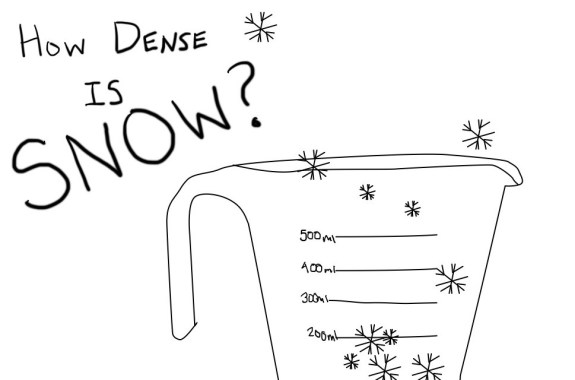Grade Level
6 - 8
minutes
15 minutes or fewer
subject
Physical Science
Activity Type:
measurement activity, snow science
Measure Snow Density with a Measuring Cup
Scroll down for a quick way to measure snow density using a measuring cup, then get out there and start scooping!
Density is a measure of the mass per unit volume of a substance. Think of it as the amount of mass that a substance packs into the space it takes up. You can calculate the density of any substance by dividing its mass by its volume. Density is usually measured in kilograms per cubic meter (kg/m3), but for the purposes of this experiment, we’ll be measuring it in smaller, more “measuring cup-friendly” units of grams per milliliter (g/ml).
Go collect some snow, but when you do, be careful not to pack it into your measuring cup. Packing more snow tightly into a smaller volume will artificially increase its density. Be sure to record the volume of snow you collected.
Here’s a trick for figuring out the mass of your snow sample without a scale: let it melt at room temperature. Your snow sample will have the same mass when it melts into water, allowing you to take advantage of a special property of water. At room temperature, a milliliter (1 ml) of water has a mass of about one gram (1 g). That means that if your melted snow sample has a volume of 32 milliliters, its mass will be about 32 grams. And 150 ml of water = 150 g. And 1000 ml of water = 1000 g. You get the idea.
Now you are ready to calculate the density of your snow sample. Divide the mass of your sample (from your melted snow mass) by the original volume of snow you collected. Use a calculator if you need to.
Try more snow! Snow density can vary widely depending on whether it is fresh, if it has melted at all, how how cold it was when it fell, etc.
More Snow Science:
Meet the Writer
About Ariel Zych
@arieloquentAriel Zych was Science Friday’s director of audience. She is a former teacher and scientist who spends her free time making food, watching arthropods, and being outside.
